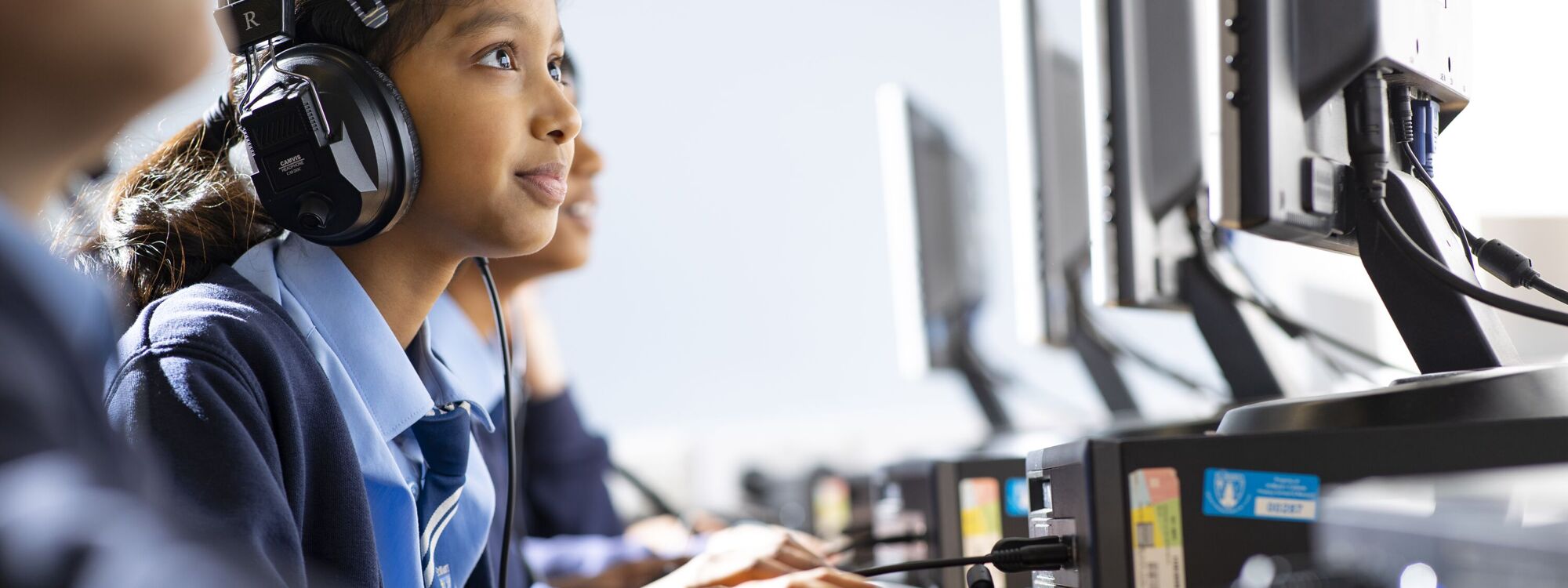
- Home
- Curriculum
- Subject Information
- Computing
Computing

Intent
- Provide a relevant, challenging and enjoyable curriculum for ICT
- Meet the requirements of the national curriculum programmes of study for ICT
- Use ICT as a tool to enhance learning throughout the curriculum
- To respond to new developments in technology
- To develop the understanding of how to use ICT safely and responsibly
- To provide children with necessary knowledge and skills to make informed choices about using technology beyond the classroom and after their time at school.
Furthermore, from Key Stage 1 to Year 6, experiences in computing and the wider curriculum are planned to develop children’s computational thinking skills. In class and during home learning, children enjoy completeing tasks using Timestable Rockstars and more.
As part of our commitment to fostering a safe and responsible digital environment for our children, we send out a weekly e-safety email. These emails provide practical tips, age-appropriate advice, and resources to help guide children in navigating the online world safely.
E-safety is taught through both computing and RSE lessons, as well as reinforced and discussed each time children interact with technology. We enjoy celebrating events such as e-safety week, where we come together as a school to consider how we can be safe when using technology.
Implementation
Our curriculum for Computing will be adapted from the Teach Computing scheme of work, ensuring high quality, engaging lessons and coverage of all aspects of the National Curriculum. This scheme was chosen as it has been created by subject experts and based on the latest pedagogical research. It provides an innovative progression framework where computing content (concepts, knowledge, skills and objectives) has been organised into a spiral curriculum, ensuring that pupils revisit learning and information areas throughout KS1 and KS2 with increasing depth each time a key area is revisited. Upon returning to each key area, prior knowledge is utilised so pupils can build on previous foundations, rather than starting again.
Impact
Key Stage 1 (Year 1 and 2)
- Understand what algorithms are, how they are implemented as programs on digital devices, and that programs execute by following precise and unambiguous instructions.
- Create and debug simple programs.
- Use logical reasoning to predict the behaviour of simple programs.
- Use technology purposefully to create, organise, store, manipulate, and retrieve digital content.
- Recognise common uses of information technology beyond school.
- Use technology safely and respectfully, keeping personal information private; identify where to go for help and support when they have concerns about content or contact on the internet or other online technologies.
Key Stage 2 (Year 3 and 4)
- Design, write and debug programs that accomplish specific goals, including controlling or simulating physical systems; solve problems by decomposing them into smaller parts.
- Use sequence, selection, and repetition in programs; work with variables and various forms of input and output.
- Use logical reasoning to explain how some simple algorithms work and to detect and correct errors in algorithms and programs.
- Understand computer networks, including the internet; how they can provide multiple services, such as the World Wide Web, and the opportunities they offer for communication and collaboration.
- Use search technologies effectively, appreciate how results are selected and ranked, and be discerning in evaluating digital content.
- Select, use and combine a variety of software (including internet services) on a range of digital devices to design and create a range of programs, systems and content that accomplish given goals, including collecting, analysing, evaluating and presenting data and information.
- Use technology safely, respectfully and responsibly; recognise acceptable/unacceptable behaviour; identify a range of ways to report concerns about content and contact.
Key Stage 2 (Year 5 and 6)
- Design, write and debug programs that accomplish specific goals, including controlling or simulating physical systems; solve problems by decomposing them into smaller parts.
- Use sequence, selection, and repetition in programs; work with variables and various forms of input and output.
- Use logical reasoning to explain how some simple algorithms work and to detect and correct errors in algorithms and programs.
- Understand computer networks, including the internet; how they can provide multiple services, such as the World Wide Web, and the opportunities they offer for communication and collaboration.
- Use search technologies effectively, appreciate how results are selected and ranked, and be discerning in evaluating digital content.
- Select, use and combine a variety of software (including internet services) on a range of digital devices to design and create a range of programs, systems and content that accomplish given goals, including collecting, analysing, evaluating and presenting data and information.
- Use technology safely, respectfully and responsibly; recognise acceptable/unacceptable behaviour; identify a range of ways to report concerns about content and contact.
Assessment
The following strategies are in place:
- The programmes of work identify clear opportunities for the monitoring of pupils’ progress.
- Programmes of work include related tasks that assist the teacher to assess the pupils’ progress and attainment in Computing.
Monitoring, evaluation and review
Monitoring the standard of the children’s work and the quality of teaching in line with the schools monitoring cycle through lesson observations, pupil voice and staff voice. The subject leader is also responsible for supporting colleagues in the teaching of computing, for being informed about current developments in the subject, and for providing a strategic lead and direction for the subject in the school.